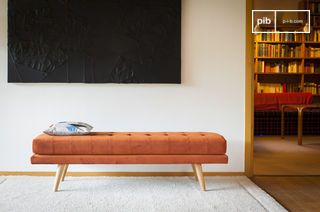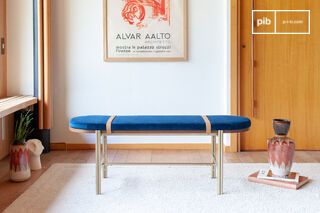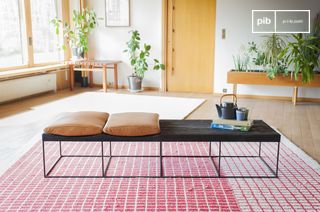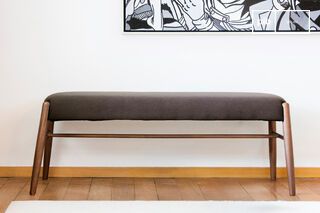End-of-bed benches
Bed benches extend the visual line of the bed and structure the room’s lower half. Positioned at the foot of the bed, they offer a discreet surface for folded blankets or morning routines. In compact rooms, they define circulation without obstructing access. Upholstered models soften the space, while wood or metal benches add linear rhythm. By marking the transition between sleeping area and open floor, bed benches clarify spatial flow and create a sense of order.
read more >Filters
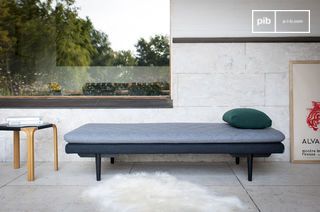
Daybed benchNorilsk
£1200
10 festive days
10% off our tables and consoles
Welcome your guests in style · Limited stock

Bed benches: a functional link at the foot of the bed
Placed directly at the end of the bed, bed benches act as a horizontal marker that stabilizes the visual composition of the room. They complete the silhouette of the bed without competing with it. In rectangular rooms, this addition balances the mass of the headboard and prevents the foot of the bed from appearing unfinished. Depending on their design, benches can either extend the texture of the bedding or contrast with it to create a deliberate break.
From a practical standpoint, this piece supports simple, everyday gestures: placing a bag, sitting while putting on shoes, or folding clothes. Unlike storage furniture, it remains open and accessible at all times. Upholstered versions bring softness and visual continuity with the bedding, while wood or metal benches can echo other structural elements in the room, such as shelves or frames. Dimensions should match the bed’s width or slightly undershoot it to preserve clear lateral circulation.
Materials and proportions adapted to the bedroom space
The choice of materials for a bed bench directly affects both its function and integration into the room. A solid wood bench adds a grounded presence and pairs well with parquet floors or raw textures. Upholstered benches reduce visual contrast and can absorb light, which may be useful in bright or minimalist bedrooms. Slim metal structures lighten the base of the room without weakening the outline.
In smaller bedrooms, a narrow bench avoids clutter while still offering useful surface area. A model with a low profile keeps sightlines open, particularly when facing a window or open door. For larger rooms, a wide bench with storage compartments can serve a dual purpose without compromising the flow of the space. Whatever the volume, placing the bench flush with the bed or slightly offset helps avoid circulation obstacles.
Clarifying the layout without adding volume
In bedrooms with minimal furniture, bed benches help articulate the layout. They introduce a horizontal axis that draws the eye along the floor rather than toward vertical bulk. This orientation supports a calm visual rhythm, especially in symmetrical or centered room configurations. In shared spaces, the bench can subtly indicate two distinct zones without using a partition.
Lighting can further emphasize this role. Placing a floor lamp nearby or letting natural light fall across the bench accentuates its lines without overpowering the room. If paired with a rug or aligned with the edges of the bed frame, the bench reinforces the geometry of the room while staying secondary to the bed itself.
As a transitional piece, the bed bench clarifies boundaries within the bedroom without introducing dominant volume. It combines practical support with spatial continuity, maintaining the room’s readability and comfort.
